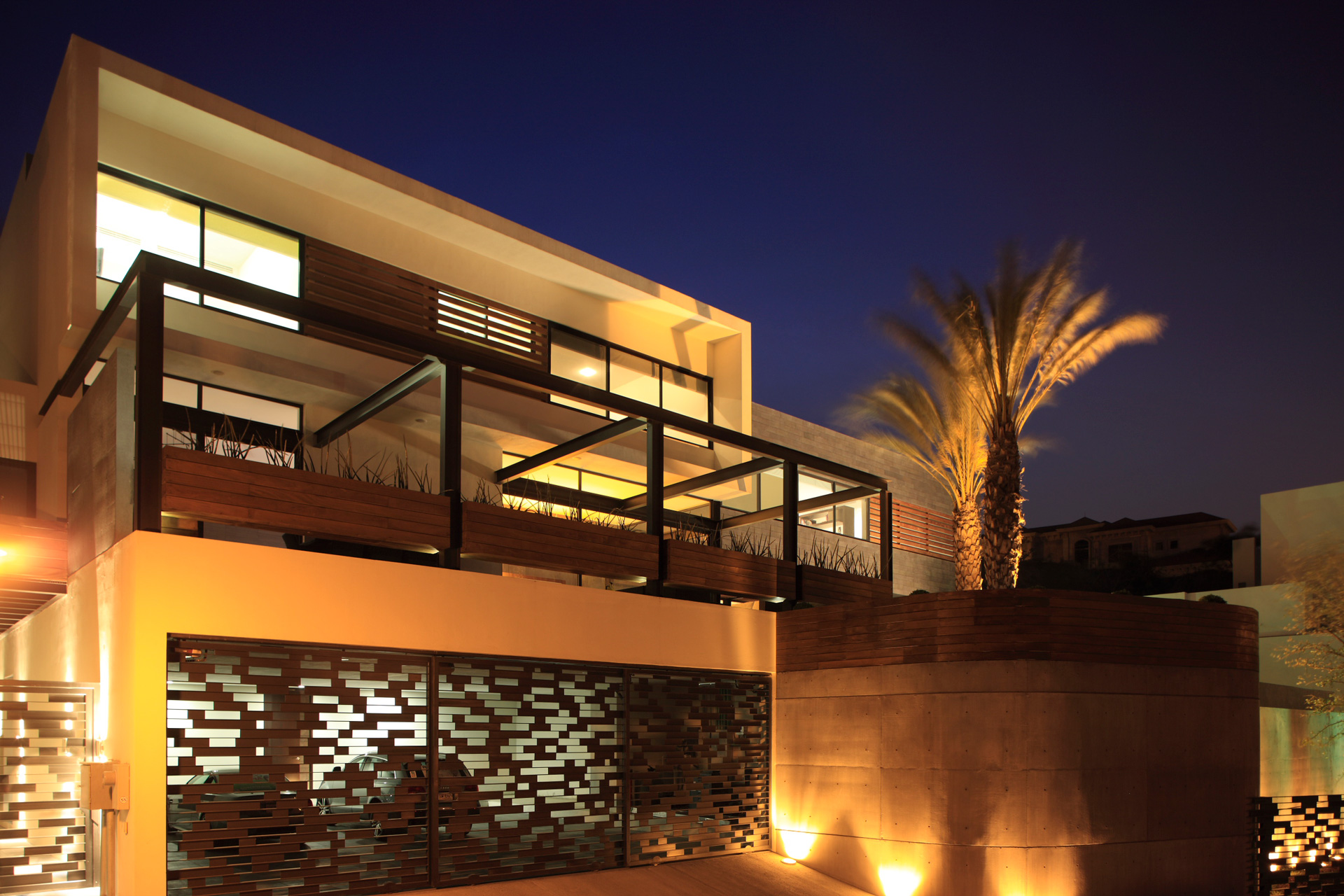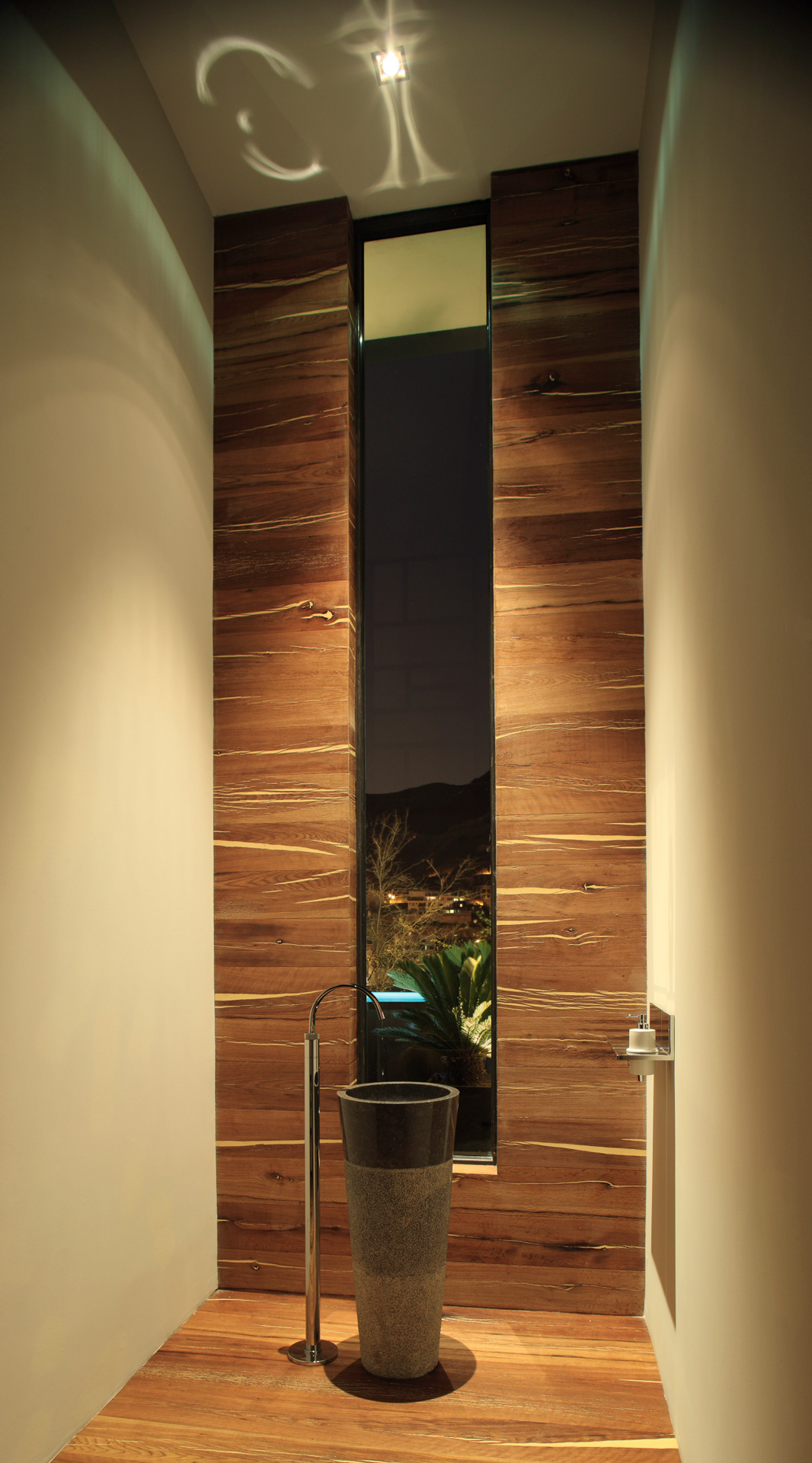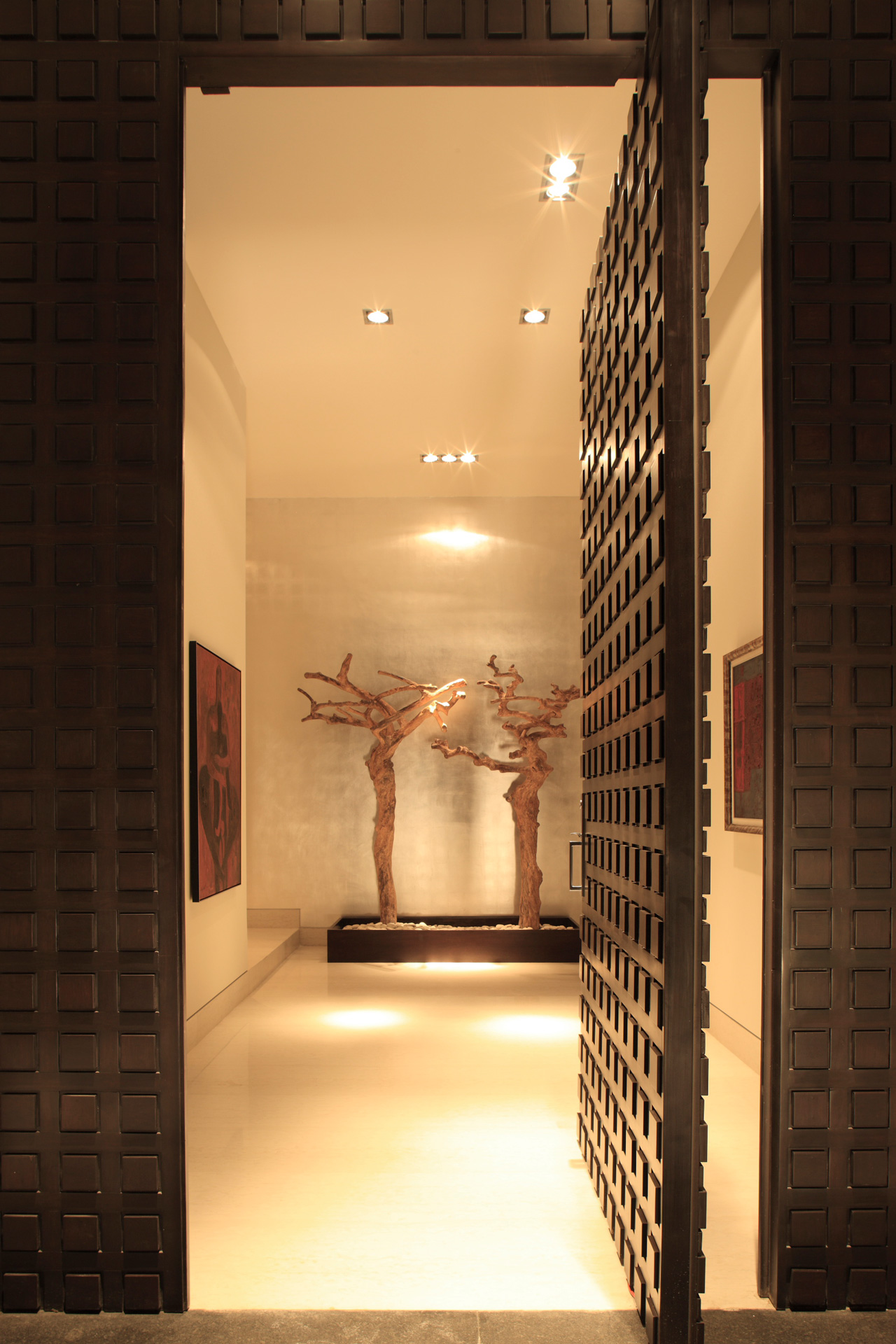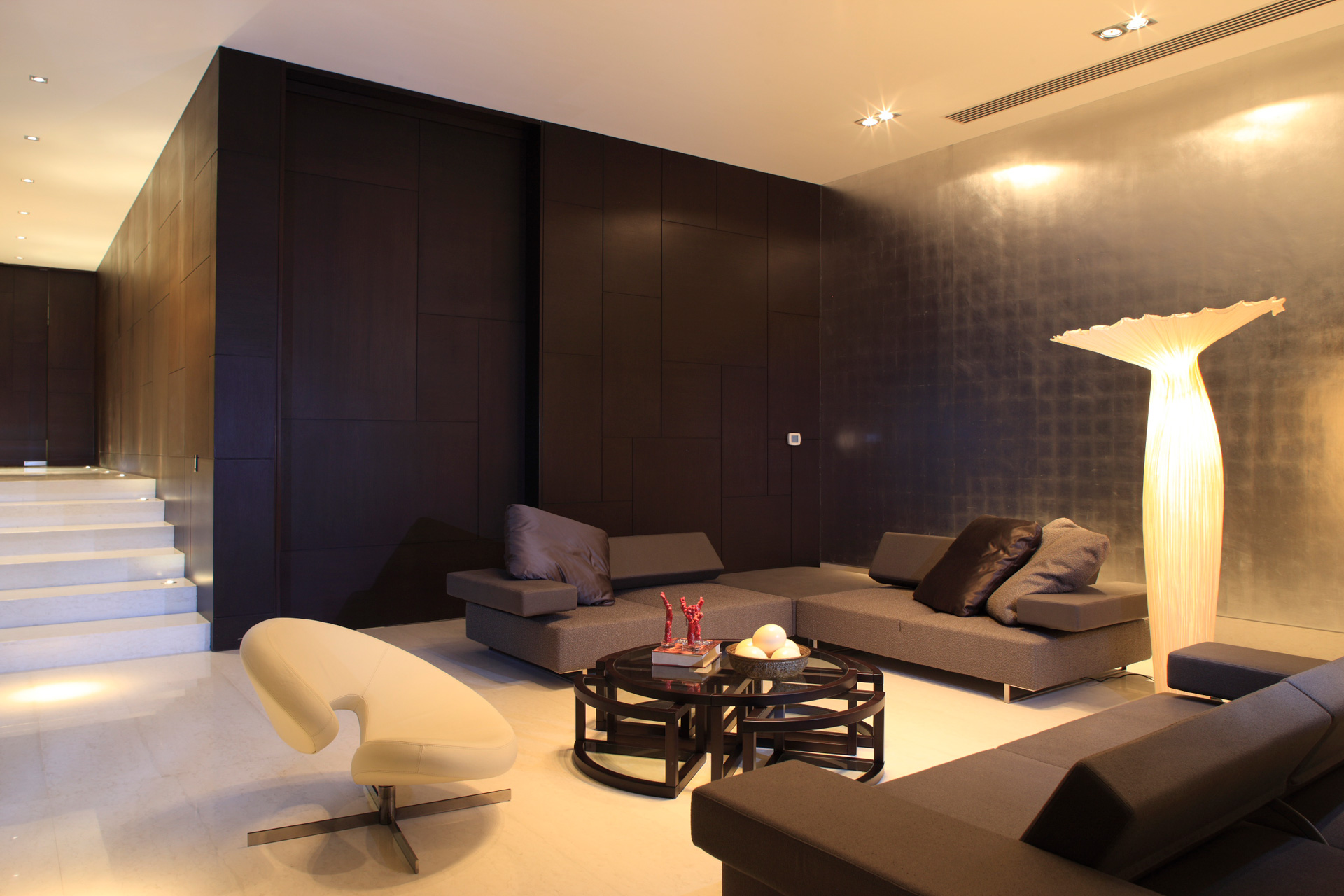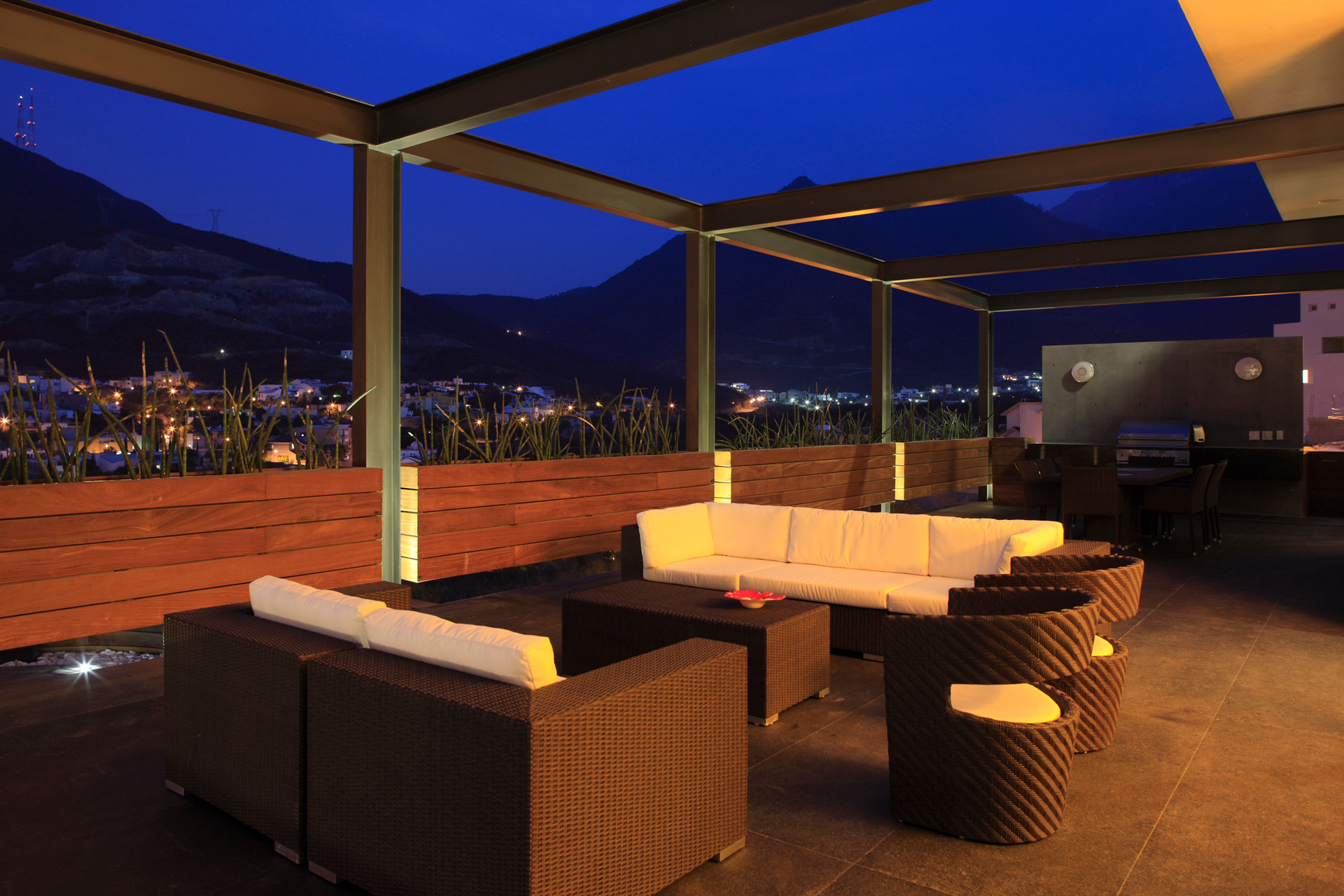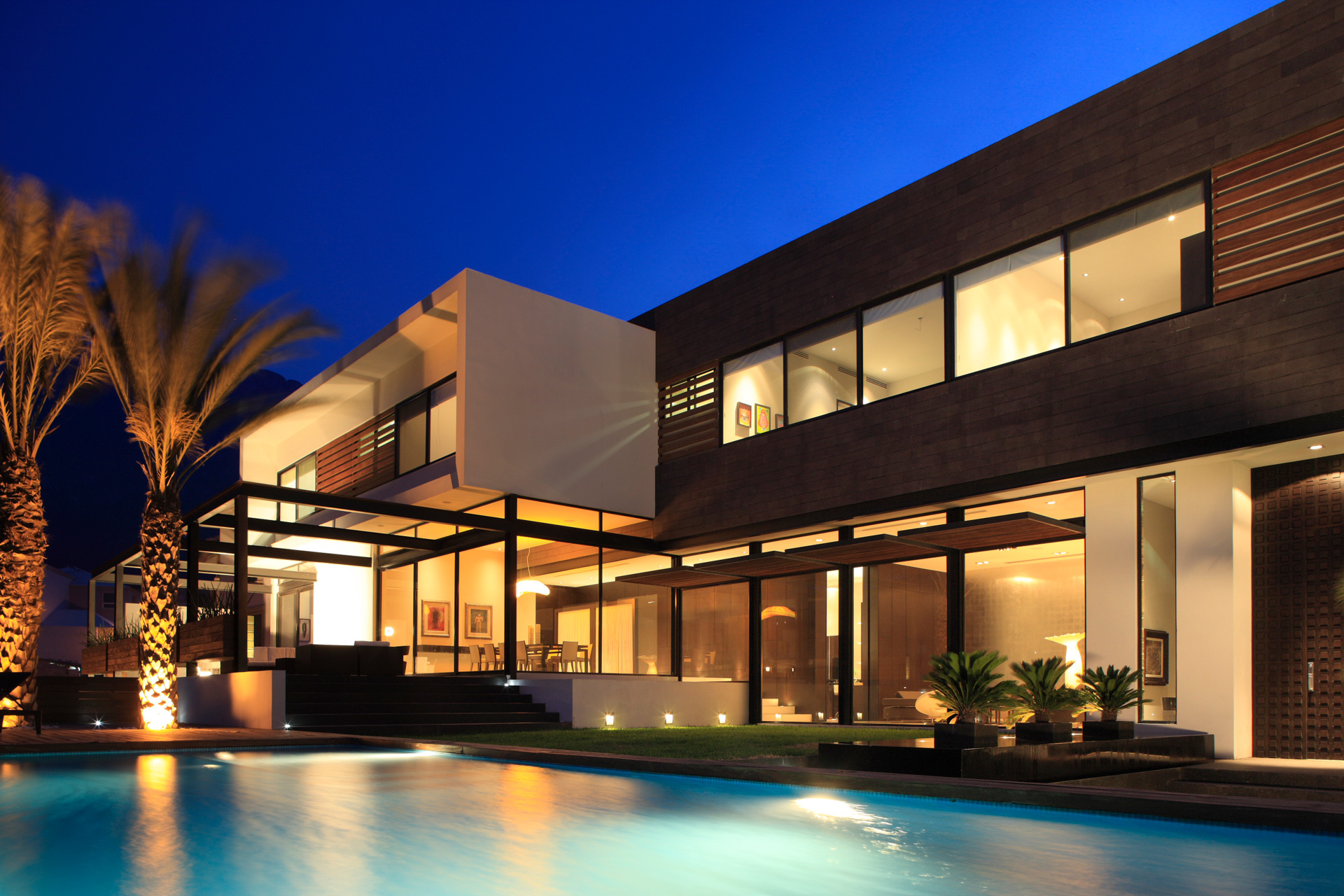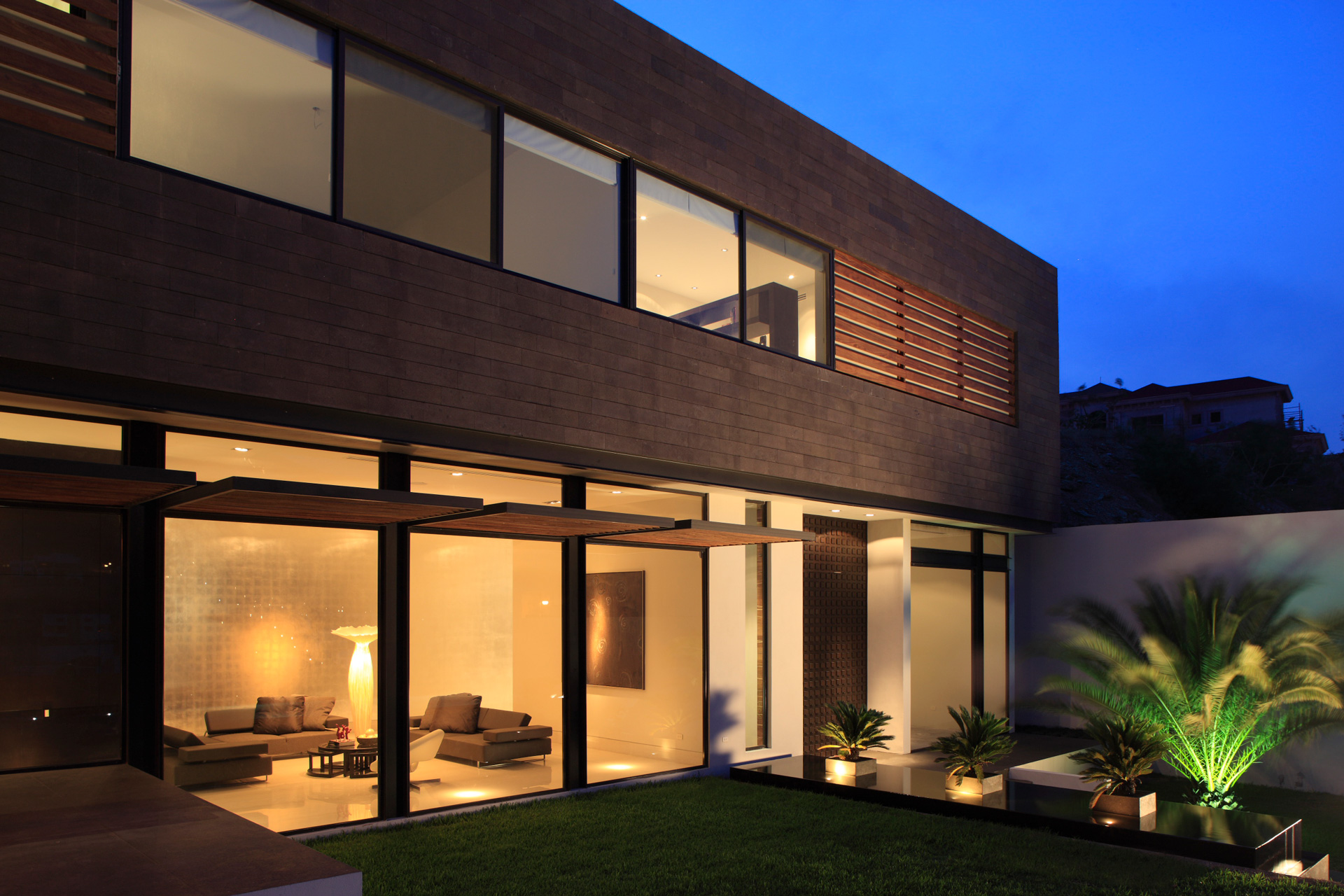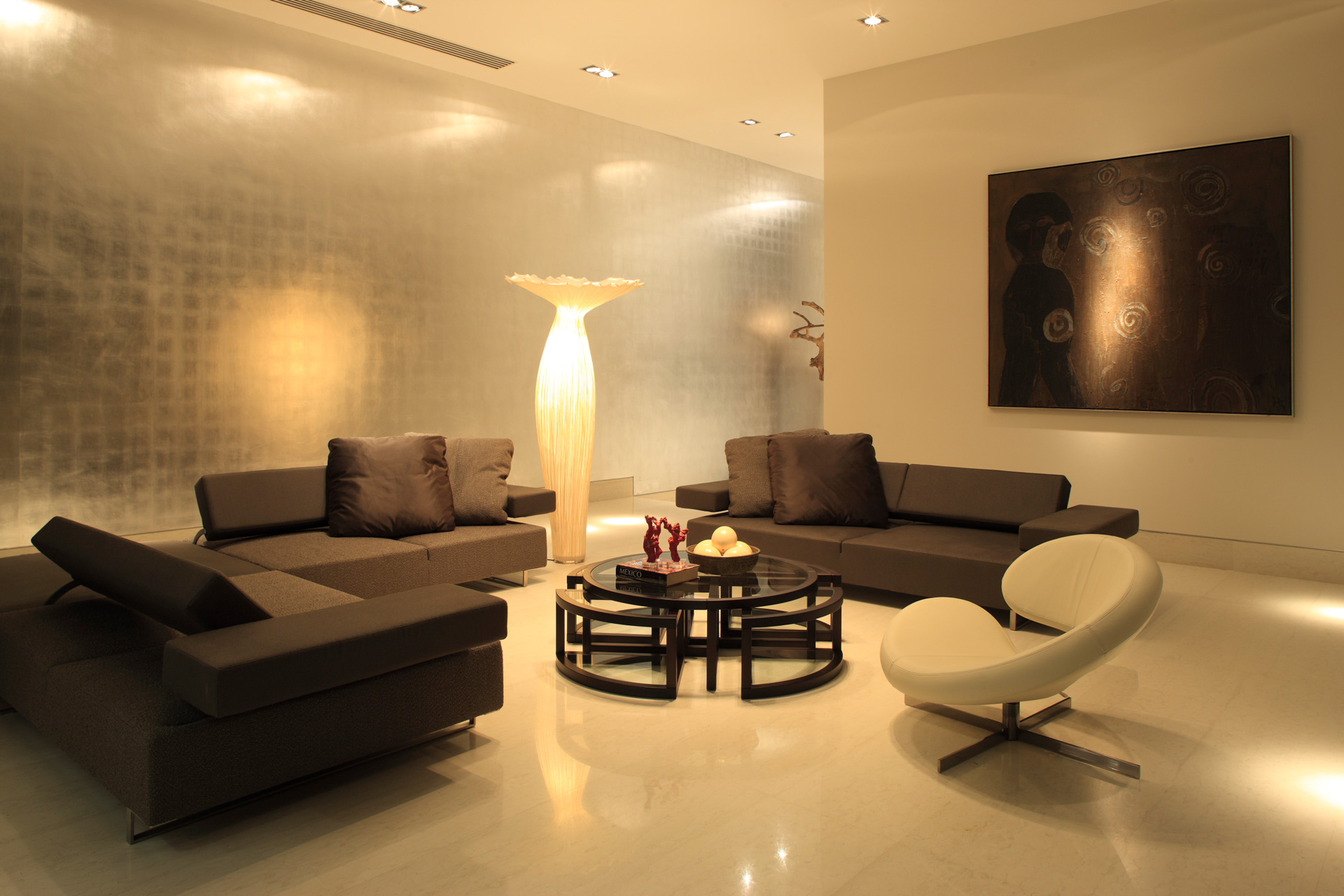The CG House rests on a generous 17,250 square foot site adjacent to the Sierra Madre mountains. While the site’s steep slope presented a number of design challenges, the dramatic views it afforded of the city of Monterrey provided the architect with a number of opportunities.
From the street, two massive oak trees rise to provide privacy and welcome shade to the swimming pool terrace above. Due to the sloping nature of the site, a massive, exposed concrete wall defines and encloses the swimming pool and garden areas, setting the tone for the design of the house itself, which is clad in brown/black volcanic stone, IPE wood, white stucco and steel.
A wide exterior granite staircase leads to an intimate garden of palm trees. Directly ahead, a twelve-feet-high dark oak door, whose grandness hints at the dramatic scale of the 10,650 square-foot home beyond, gives way to the entry foyer, with fifteen-feet-high walls covered in silver leaf. A striking sculptural piece of coconut roots, steel and rocks was designed specifically for this space.
The living, dining and family rooms all have large windows with views of the garden, allowing light to completely flood the spaces as well as creating a seamless interplay between interior and exterior spaces. Also, within the house, subtle level changes between rooms not only add interest to the interior layout but also reflect the site’s topography.
In the private areas of the home, articulated through a long corridor, occupants have access to a second garden, located at the highest point of the building site and providing a less formal and more recreational space.
